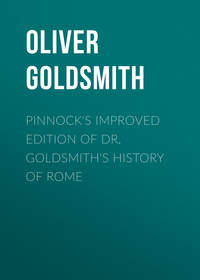Sadece Litres'te okuyun
Kitap dosya olarak indirilemez ancak uygulamamız üzerinden veya online olarak web sitemizden okunabilir.
Kitabı oku: «Pinnock's improved edition of Dr. Goldsmith's History of Rome», sayfa 2
Bir şeyler ters gitti, lütfen daha sonra tekrar deneyin
Türler ve etiketler
Yaş sınırı:
12+Litres'teki yayın tarihi:
01 kasım 2017Hacim:
570 s. 1 illüstrasyonSoyut:
Telif hakkı:
Public Domain